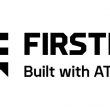Tower-siting fight heats up
It has been nearly 10 years since the wireless industry ushered in competition with the entrance of new PCS operators. With it came a plethora of towers and numerous clashes with local governments to stop the ugly metal poles from invading their constituents' neighborhoods. Today, tower-siting battles rage on at the local and federal level for both commercial operators and public-safety communications providers — as both aim to improve the coverage of their networks — and the fight has landed once again in federal court.
The wireless industry has been fighting rules crafted by the FCC in October 2004 that gave the commission the power to regulate and streamline commercial and public-safety wireless tower and facility construction in historic areas and on Native American lands. The FCC made this move because laws varied dramatically based on local jurisdictions, making the approval process to build transmission towers on such sites difficult to manage.
The FCC's Nationwide Programmatic Agreement (NPA), backed by the federal Advisory Council on Historic Preservation and the National Conference of State Historic Preservation Officers (SHPO), describes standards for identifying historic properties, establishes enforceable deadlines for SHPO and FCC reviews, and excludes certain constructions from review such as enhancements to existing towers.
The wireless industry, through the Cellular Telecommunications & Internet Association, is challenging the FCC's authority to regulate tower siting and has lost appeals within the commission. CTIA now has taken the fight to court, with the case pending before the U.S. Court of Appeals for the District of Columbia Circuit.
“Instead of individual service providers showing compliance with [federal law], the FCC will impose its definition on those requirements,” said William Johnson, professor of telecommunications engineering technology at the Rochester Institute of Technology. “The industry believes that if the FCC gets involved, it will only make a difficult situation even worse.”
However, the case goes much further than operators challenging the FCC's legal authority, according to George Foote, a partner with the law firm Bracewell & Giuliani in Washington.
“Financially, wireless operators don't want to deal with the delay and expense of fighting the placements of towers,” Foote said. “What often happens is that the statute can give opponents of tower-construction projects the ability to use the statute as a way to block carriers from putting up towers.”
The commission never has regulated tower construction except when it pertains to lighting and painting for towers above 200 feet, so aircraft can detect them. Today, wireless operators are issued geographic-area licenses that authorize them to build, subject to local zoning constraints. But the FCC concluded that the construction of a wireless tower in a historic or environmental area is a federal undertaking under Section 106 of the National Historic Preservation Act (NHPA).
Indeed, the industry is concerned about being overly burdened. Michael Altschul, senior vice president and general counsel for CTIA, told Congress last year that controversy remains over what is considered a historic site. Although the NHPA requires review of federal undertakings on properties included or eligible for inclusion in the National Register, SHPOs and preservation groups have taken the position that the wireless industry must consider any property that could conceivably meet National Register criteria.
“As a result of this overly broad interpretation, wireless carriers routinely must investigate an uncertain universe of potentially eligible properties in a several-mile radius from the proposed site,” Altschul said. “This causes significant delay, additional costs and uncertainty in the tower-siting process.”
CTIA has some ammunition because former Commissioner Kathleen Abernathy and now Chairman Kevin Martin sided with the industry on the matter in 2004.
“I do not believe the FCC has the legal authority under the terms of the [NHPA] to adopt this NPA,” Abernathy said. “I cannot agree that the construction of all communications antenna facilities invariably constitutes a federal undertaking for the purpose of NHPA. As a result, I believe the commission is exceeding its statutory authority in regulating antenna facilities where the FCC does not issue a construction permit.”
“The underlying question is what does it mean to do a federal undertaking? You have a statute that is really not an FCC statute. It's a historic-preservation statute,” said a former lawyer with the FCC. “Twenty years ago, the FCC said that things in the federal spectrum are federal issues. From my perspective, the main issue is not about FCC authority. It is what is the definition of a federal undertaking?”
There are some indications the court could move the issue back to the FCC for reconsideration. Although Martin dissented on the issue in the first place, his colleagues could vote to affirm the commission's authority. Consequently, the industry wants this settled in court.
Meanwhile, the battle over tower construction continues at the local level — with a mix of victories and setbacks for both public-safety and commercial carriers.
“It's a very classic industry three-way fight going on among the industry and federal and local governments, but operators are pushing where they can,” Foote said.
Operators have actively co-located their towers with their competitors for several years to reduce the number of towers being constructed, but it isn't possible in all areas. Nationwide, residents complain about the unsightly metal and local municipalities respond with strict zoning laws, which can have chilling results on public-safety equipment.
North Andover, Mass., recently voted to exempt public-safety communications from the town's strict zoning laws governing cellular towers. The rules keep wireless equipment at least 600 feet away from homes unless there is approval from the zoning board. The fire and police department had argued that the resulting poor communications put everyone at risk.
According to the Courier-Journal in Kentucky, residents of Prospect, Ky., near Louisville, are fighting a proposed 180-foot tower that Sprint Spectrum, the tower ownership arm of Sprint Nextel, plans to erect behind the Harrods Creek Fire Department station, with the department's blessing. In return, Sprint would pay the fire department $1500 per month and replace the department's aging emergency communications tower by making it part of the cellular tower. But residents are concerned about their property values and the potential health risks of additional radio waves emanating from the cellular tower.
Recently, Sprint Nextel won two cases against municipalities that rejected tower-siting applications. Both courts ruled that the local government enacted rules that arbitrarily restricted tower sites.
The U.S. Court of Appeals for the 9th Circuit said the City of La Canada Flintridge, Calif., overstepped its authority under state law by denying permits for towers (see sidebar on page 35). The city had approved a tower ordinance that said such structures could have a “deleterious aesthetic impact” on the neighborhood.
In New Jersey, Sprint Nextel won another case in state court, which ruled invalid a zoning statute enacted by the borough of Ringwood that required towers to be built on city property and not within 1000 feet of hospitals, schools or public-recreation facilities.
“An intention to provide a 1000-foot proximity requirement in order to protect against a public perception that the tower presents a health hazard from emissions contravenes the Telecommunications Act of 1996, which expressly forbids local regulation of the placement of personal wireless service facilities on the basis of environmental effect of radio-frequency emissions,” Judge Burrell Humphreys wrote.
These cases could be a harbinger. When cellular companies began to proliferate two decades ago, municipalities acted quickly to squash the rampant buildout of towers. Since then, tower owners and operators have decried what they consider draconian and capricious government intrusion. Apparently, the courts are beginning to hear them.
CTIA's examples of the NPA gone awry
In rural western Maryland, a NHPA challenge to a tower proposed for both public-safety and commercial wireless services resulted in a three-year construction delay. During the protracted proceedings, emergency services communications became so degraded that Medivac helicopter pilots transporting patients to nearby hospitals could no longer communicate with EMS crews on the ground or hospitals. Concerned that the ability of its emergency teams to save lives was endangered, the state of Maryland requested expedited consideration, the FCC issued an order finding the tower posed no adverse effect to historic properties, and the tower was built.
In upstate New York, the SHPO decided that construction of a new tower would have an adverse effect on an historic property located more than a mile away, which resulted in a four-year delay in the construction of the tower. To view the tower from the property, one had to look through trees, across a busy highway and through utility lines strung along the highway. When the FCC examined the case, it found that the SHPO's position was unpersuasive and authorized the construction of the tower.

















